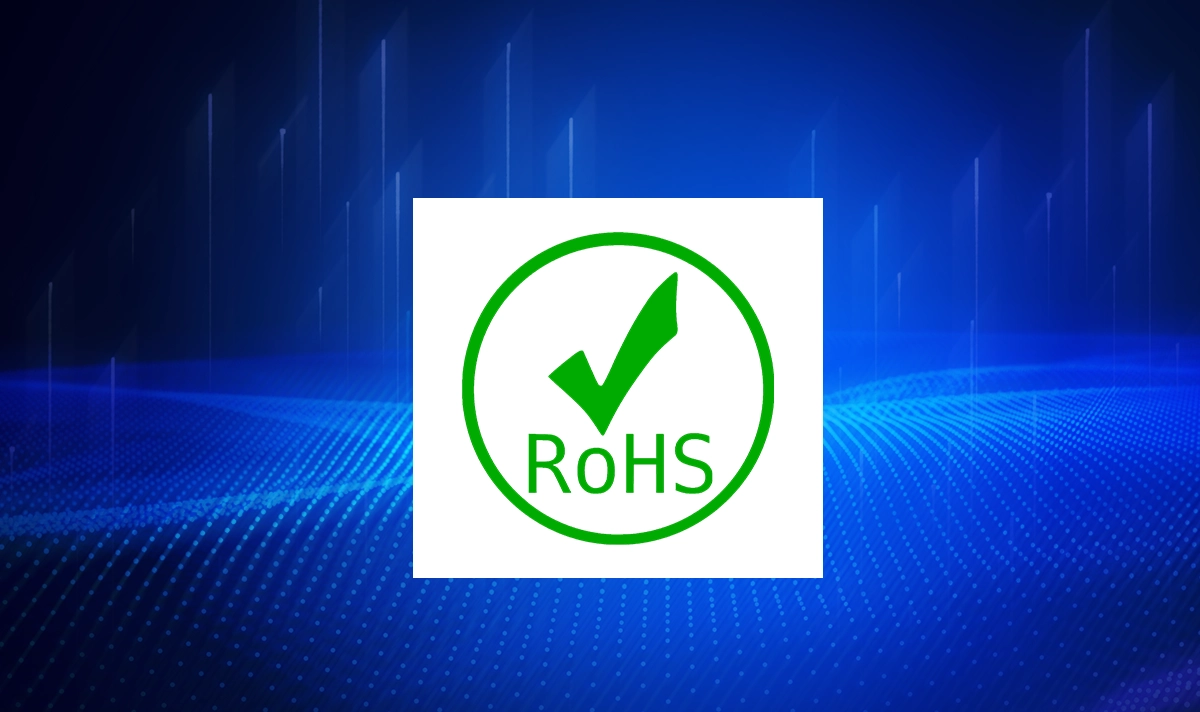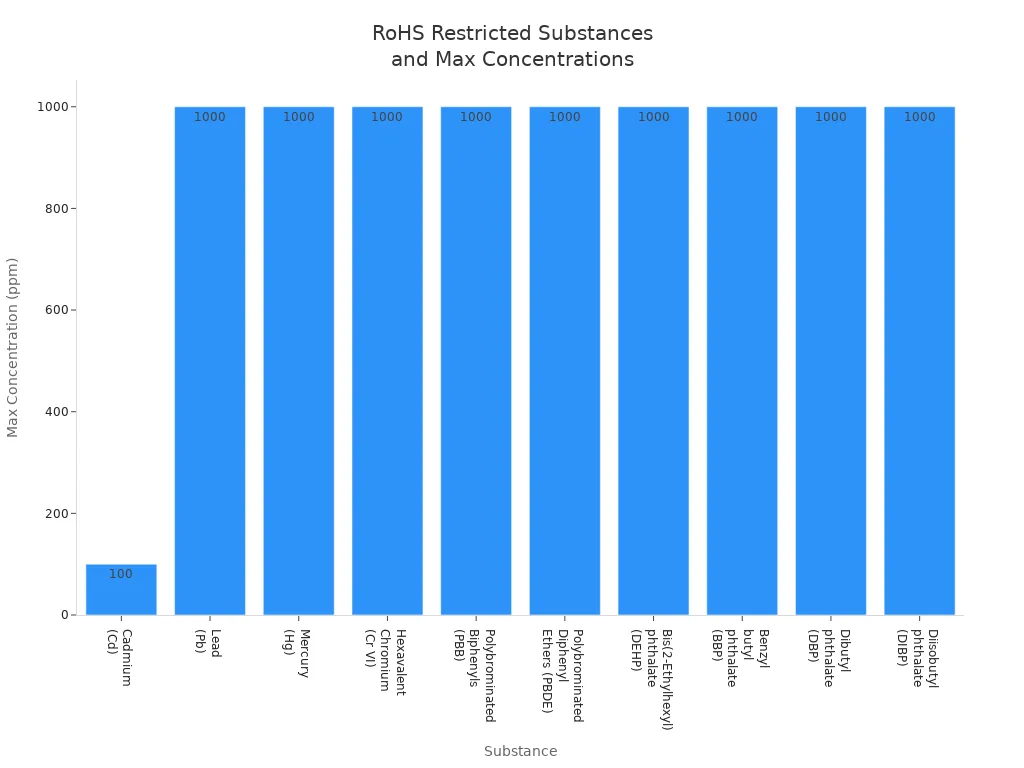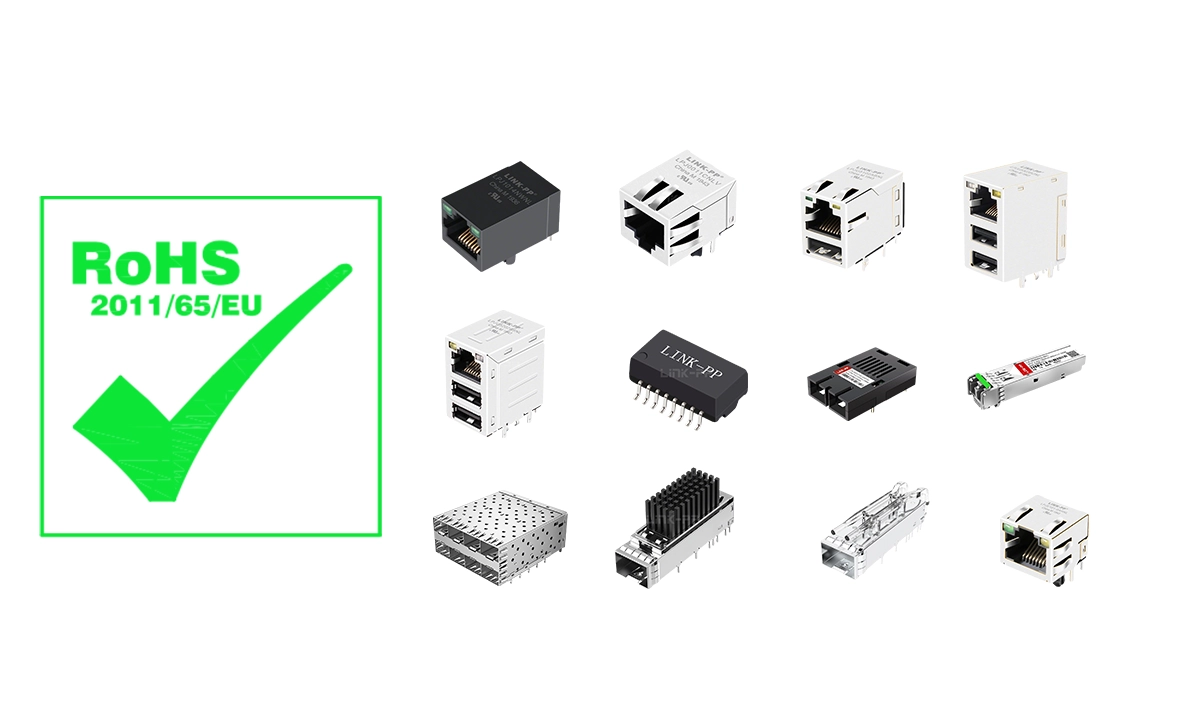
RoHS stands as a regulation that limits hazardous substances in electronic devices, especially within the EU. The RoHS directive, enforced by both EU and California RoHS law, targets electronic equipment to protect health and the environment. Manufacturers and importers must follow these regulations for compliance.
RoHS restricts substances like lead, mercury, and cadmium in electronic devices.
The RoHS directive and California RoHS law ensure safer recycling and eco-friendly manufacturing.
Electronic devices covered by the RoHS directive show reduced environmental contamination.
The EU mandates compliance for electronic products, minimizing risks from electronic waste.
RoHS compliance supports global efforts to manage hazardous substances in electronic equipment.
What is RoHS Compliance?
The RoHS directive, known as the Restriction of Hazardous Substances directive, is a regulation from the European Union. It restricts the use of certain hazardous materials in the manufacturing of electrical and electronic equipment (EEE). First introduced in 2003 under Directive 2002/95/EC and now updated as Directive 2011/65/EU, the regulation is commonly referred to as RoHS 2, with the latest amendment RoHS 3 (Directive 2015/863/EU) effective from July 2019.
The main goal of the RoHS directive is to protect human health and the environment by limiting hazardous substances in electronic devices. The directive also aims to reduce the risks associated with electronic waste and to encourage safer alternatives in manufacturing.
The RoHS directive forms part of a broader EU effort to manage electronic waste and hazardous materials. It works alongside the Waste Electrical and Electronic Equipment (WEEE) directive to ensure safer recycling and disposal of electronic equipment.
Purpose of RoHS Certification
The primary objective of RoHS is to reduce environmental and health risks by limiting the presence of specific toxic substances in electronic products. It ensures that hazardous materials are not released into the environment during the product’s lifecycle — from production to recycling.
RoHS compliance supports:
Safer recycling and disposal of electronic waste
Protection of human health, especially for manufacturing workers
Global harmonization of environmental product standards
Substances Restricted by RoHS
Restricted Substances List
RoHS currently restricts the use of 10 substances in electrical and electronic equipment. These are limited to maximum concentration values in homogeneous materials as follows:
Substance | Limit (by weight) | Use in Electronics |
|---|---|---|
Lead (Pb) | 0.1% | Solder, cable sheathing |
Mercury (Hg) | 0.1% | Switches, relays |
Cadmium (Cd) | 0.01% | Pigments, batteries |
Hexavalent Chromium (Cr⁶⁺) | 0.1% | Anti-corrosion coatings |
Polybrominated Biphenyls (PBBs) | 0.1% | Flame retardants |
Polybrominated Diphenyl Ethers (PBDEs) | 0.1% | Flame retardants |
DEHP, BBP, DBP, DIBP (Phthalates) | 0.1% each | Plasticizers in cables, insulation |

The 10 restricted substances list is central to the RoHS directive. Manufacturers must ensure that all covered electronic devices meet these substance restrictions to comply with EU regulations. LINK-PP ensures all components meet RoHS requirements, maintaining strict control over hazardous substances across its product portfolio.
Products Covered
The RoHS directive applies to a wide range of electrical and electronic equipment. The EU defines 11 categories of covered electronic devices under Annex I of the directive. These categories include most products that use electricity or electromagnetic fields.
Large household appliances (such as refrigerators and washing machines)
Small household appliances (such as hair dryers and toasters)
IT and telecommunications equipment (such as computers and smartphones)
Consumer electronics (such as televisions and audio equipment)
Lighting equipment (such as lamps and light fixtures)
Electrical and electronic tools (such as drills and saws)
Toys, leisure, and sports equipment (such as electronic toys and fitness trackers)
Medical devices (including in-vitro diagnostic devices)
Monitoring and control instruments (such as thermostats and smoke detectors)
Automatic dispensers (such as vending machines)
Other electrical and electronic equipment not covered by the previous categories
Who Needs RoHS Compliance?
RoHS applies to manufacturers, importers, and distributors of electronic and electrical equipment sold within the European Economic Area (EEA). Product categories include:
Networking and telecommunications equipment
Consumer electronics
Computers and peripherals
Lighting equipment
Industrial monitoring and control instruments
Medical devices (with specific deadlines)
Even component-level suppliers, such as RJ45 connectors, magnetics, and optical transceivers, must ensure that their parts do not introduce restricted substances into the final device.
RoHS Compliance Process
RoHS compliance can be demonstrated through:
Material declarations and documentation from suppliers
Third-party laboratory testing (e.g., XRF, ICP-MS analysis)
Technical files and declarations of conformity (DoC)
Although RoHS is a self-declared certification, companies must provide evidence of conformity upon request by EU authorities.
LINK-PP Compliance:
All LINK-PP products—including RJ45 connectors, LAN magnetics, and optical transceivers—are fully RoHS compliant. We rigorously monitor our materials and supply chains to ensure conformity with EU environmental standards.

RoHS vs REACH vs WEEE
RoHS is often mentioned alongside other EU environmental directives:
Directive | Focus | Applies To |
|---|---|---|
RoHS | Substance restriction | Electronics only |
REACH | Chemicals/Substances of Very High Concern (SVHCs) | All industries |
WEEE | Waste collection and recycling | Electronics only |
While RoHS limits the presence of hazardous substances, REACH tracks broader chemical use, and WEEE mandates product take-back and disposal responsibilities.
Conclusion
RoHS compliance is a critical aspect of responsible electronic product design and global market access. By eliminating hazardous substances, RoHS helps protect users, workers, and the environment while ensuring products meet international sustainability standards.
If you're sourcing components for RoHS-compliant products, always verify the RoHS status of every part to ensure full end-product conformity.
FAQ
What does RoHS compliance mean for electronic equipment?
RoHS compliance means electronic equipment meets the restriction of hazardous substances directive. These devices contain only allowed levels of hazardous substances, following EU regulations and requirements.
What products fall under the RoHS directive?
The RoHS directive covers most electrical and electronic equipment. This includes household appliances, IT devices, lighting, toys, and medical devices. Some exemptions exist for specific products.
What does RoHS compliance mean for LINK-PP products?
RoHS compliance means that LINK-PP products do not contain restricted substances beyond EU-specified limits. Every product is tested and certified according to RoHS directives to ensure safety, reliability, and environmental responsibility.
Are all LINK-PP components RoHS compliant?
Yes. All LINK-PP components, including integrated RJ45 jacks, SFP transceivers, and LAN transformers, fully comply with the latest RoHS requirements. Compliance is verified through material declaration and third-party testing.
Can I request RoHS compliance documents or test reports?
Yes. LINK-PP provides RoHS compliance statements and test reports upon request. Please contact our support team or sales representative for documentation related to specific part numbers.


